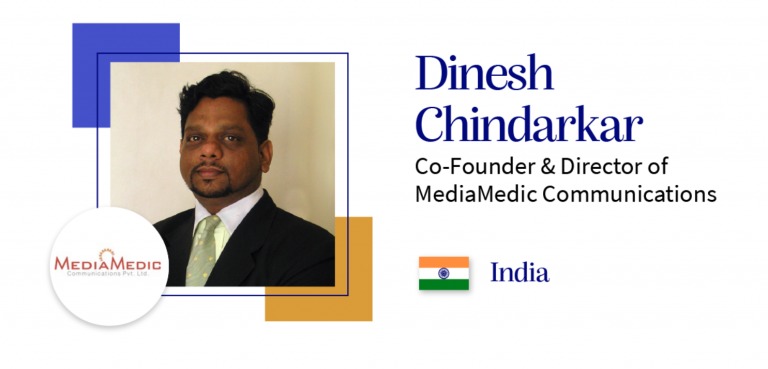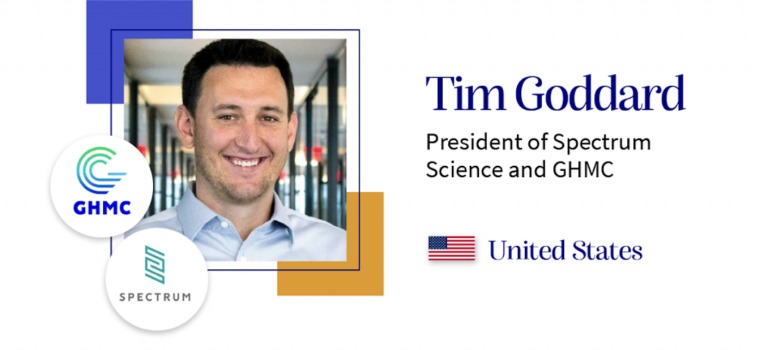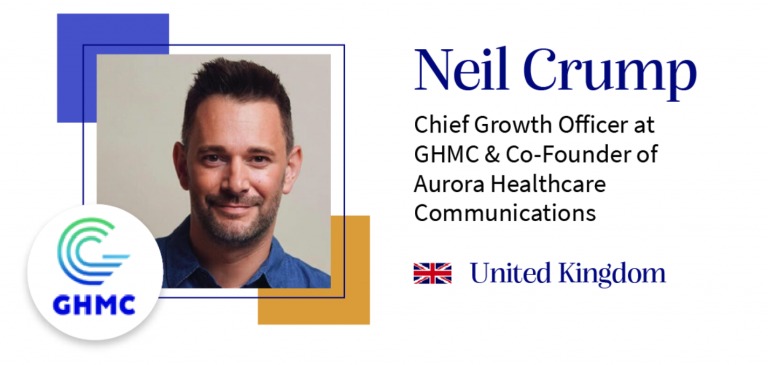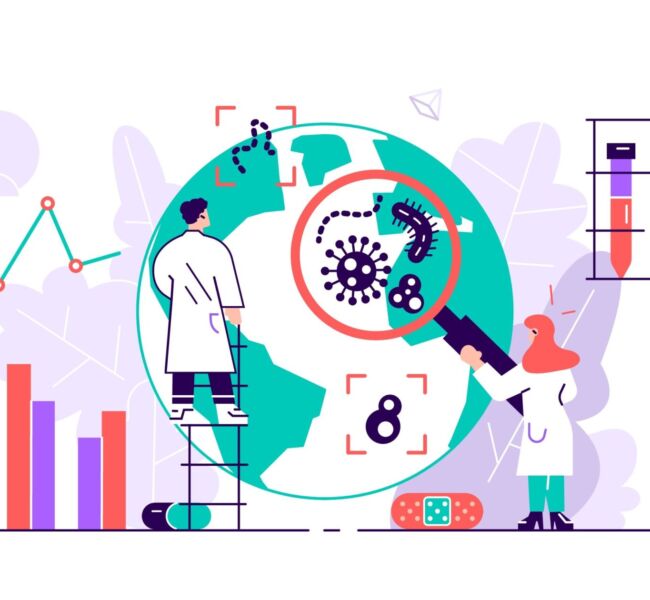We asked our partner agencies from the GHMC Network for their perspectives on healthcare communication trends and opportunities in 2023. Here’s a look at what’s unfolding in Asia Pacific, North America, Europe, and Latin America.
GHMC – Global Health and Marketing Communications – is a robust global network of independent healthcare agencies where health, science, expertise, and insights connect to deliver integrated solutions. Spurwing is the exclusive agency partner in Singapore.

What trends or issues are emerging in healthcare communications in your market/region in 2023?
The responsibility of a pharmaceutical, medtech or consumer healthcare company to improve health literacy is being felt more than ever as these organisations consider how they are actively contributing to national health agendas, and keeping the sustainability goals on their horizon of course.
Given Singapore’s position as the regional hub for many of our clients, we’re seeing a huge focus on the Corporate Affairs function to not only build and protect reputation, but to also deliver strategic plans that support reimbursement, access, and lifecycle planning across diverse markets.
Our region also has some of the world’s largest ageing populations. It is no surprise that we are seeing major commitments such as Singapore’s Healthier SG to promote preventative healthcare and “health-seeking” behaviours and lifestyles. There is clearly a lot to be done!
Where do you see opportunities for healthcare companies to lead from the front in your region when it comes to great communications in 2023, and why?
Plan well but leave room to flex too. We cannot overstate the importance of a well-planned communication strategy, but audience preferences are evolving rapidly too. Content strategies need to have two key elements for success: an audience-led approach to content and a multi-channel amplification plan.
Consider what the audience want and need to hear rather than what the business has to say. Fill in the gaps in information for them. Multi-channel approaches are becoming the norm and communication strategies that do not use various touchpoints stand to lose out on impact and scale. After all, repetition is key to retention.

What trends or issues are emerging in healthcare communications in your market/region in 2023?
We are seeing many of our pharmaceutical clients return to their pre-COVID-19 focus on local market launches, with many of the TGA registration and PBS reimbursement applications of 2021-2022 expected to come to fruition this year. With longstanding relationships and service agreements with the majority of industry players, specialist health communications agencies, such as VIVA! Communications, are poised for action this year, to support clients with product launches across a plethora of therapeutic areas.
Where do you see opportunities for healthcare companies to lead from the front in your region when it comes to great communications in 2023, and why?
It is well documented that despite claims of ‘patient centricity’, the Australian pharmaceutical industry is yet to fully embrace patient participation in the communications process. Looping in patients at the start of strategic communication decisions, ensures the patient voice, experiences & insights, are genuinely front & centre of every communications campaign. Leveraging patient insights into barriers to treatment, & behavioural drivers, can serve to optimise patient engagement, & improve adherence.

What trends or issues are emerging in healthcare communications in your market/region in 2023?
In India, with its fast-growing economy and a boost to the healthcare sector by the recent union budget, there is a thrust for communications from various players. With a better understanding of digital transformation, there is a strong move towards integrated communication plugged with the right use of technology. Awareness building, wellness solutions, need for combating fake news are also taking center stage.
Where do you see opportunities for healthcare companies to lead from the front in your region when it comes to great communications in 2023, and why?
As a fast-growing nation with a huge population exposed to lifestyle diseases, there is a lot that can be done on preventive health and early detection. Healthcare companies need to take the lead to build health properties to engage patients and caregivers that can help with early diagnosis and reduce the health burden on the nation. With excellent Digital adoption and penetration across the nation, it is time to unlearn and think differently to execute newer strategy-led approaches. Bringing awareness about high-tech new devices, health and wellness products, health plans, etc is required at this stage. Since overseas players are entering Indian market now, reputation building is very important for them too.

What trends or issues are emerging in healthcare communications in your market/region in 2023?
Patient engagement and patient-centered drug development. For many years the measures of safety and efficacy in clinical development programs have been defined by regulators, investigators and industry, but there’s an increased emphasis in the U.S., and many other parts of the world, on ensuring patients who will ultimately benefit from new treatments have a seat at the table as studies are designed. This is critical as the treatments, once commercialized, will be used in the real world rather than the highly-controlled environment that exists in trials. As such, trials need to reflect the measures that matter most to the end user – patients – in their daily lives. In some
Where do you see opportunities for healthcare companies to lead from the front in your region when it comes to great communications in 2023, and why?
Diversity and representation. The social justice movement triggered by events of the past several years has shone a bright light on the racial and ethnic inequalities that exist in the U.S. and the healthcare system is one place where these inequalities have typically been most pronounced. From under-representation in clinical trials to being overlooked in educational and commercial activities, many minority populations have been neglected in the development and delivery of new treatments. The industry now has an opportunity to redefine the way it engages with the public, and in doing so build trust and credibility with historically underserved communities to ensure more equitable care for all. categories there may be an increased willingness to accept tolerability issues if it means better efficacy or more convenient delivery. In others, we may need to redefine the way we think about efficacy, moving from clinical measures based on surrogate endpoints or complex composite scales to more meaningful outcomes for patients, such as quality of life. All of this starts with engaging and listening to patients.

What trends or issues are emerging in healthcare communications in your market/region in 2023?
Google and Microsoft AI chatbot additions to Search will give all of us, including the patients we ultimately serve, a more naturalistic way to acquire information as and when needed. This is potentially a major shift rather than just the ‘optimising’ of content and copy we’ve needed to do in the past.
Where do you see opportunities for healthcare companies to lead from the front in your region when it comes to great communications in 2023, and why?
Fully understanding the realities of people living with a disease is where success will be found. When developing resources, how people describe the experience of ‘managing’ their condition, in their own words, must become mandatory. As Search becomes more naturalistic, then businesses must produce content that resonates in the real world. The foundation of this will be working with patients as co-creators. Healthcare companies that do this will thrive.

What trends or issues are emerging in healthcare communications in your market/region in 2023?
Health inequality sadly remains one of the least well-addressed areas of healthcare in the UK. Even as policymakers, patient groups and health companies invest time in looking at the problems, they remain at the very top of our most urgent priorities when discussing what change we can help clients achieve. Against the backdrop of a global cost of living crisis and advanced therapies with curative potential being approved (or otherwise), helping our clients to navigate a plethora of challenges requires focus and experience.
So, how can we help? Remain committed to encouraging broad representation in the co-design of our programmes, it’s become essential that representation is diverse, human and authentic.
This must be done at every level of the work we are doing, from learning about the experiences of a diverse range of the patient community, asking for their input and guidance on messaging and the channels campaigns are delivered on, and also learning where they feel the most significant gaps in care exist. Only then will we be providing materials that support the challenges people are genuinely facing with their health conditions and creating campaigns that better reflect communities.
Where do you see opportunities for healthcare companies to lead from the front in your region when it comes to great communications in 2023, and why?
To work with and provide diverse, representative and authentic materials and to address the health inequalities that exist, our clients need to consider how and where they are reaching patients. This is crucial in the planning stages of any campaign and includes, but is not limited to, working with community leaders, influencers and minority patient groups, working out priorities and health needs of different communities and the barriers that may exist for them, and determining where your audience is and going directly to them – this might not necessarily be online or in traditional media – and although these channels are important, sometimes it may be more effective to share content through localised channels or in-person.
Once audiences are defined and we have worked to understand the situations that exist, an important focus for our clients should be defining the behaviour change or change in thinking that they want to see in response to a campaign. Setting out appropriate KPIs in relation to this behaviour change and then continuously monitoring performance throughout is crucial to keep your end goal in mind, and then finding the best ways to measure behaviours from our priority audiences will allow us to show the actual value of the work we are doing for a broad range of the patient community.

What trends or issues are emerging in healthcare communications in your market/region in 2023?
The progress of new technologies has had a huge impact on the healthcare business, however, in underdeveloped countries, the access to technology (mobiles, internet, new-tech medicine) is still very unequal. Rural areas (far from the cities), where low-income people live, do not have access to these developments which could improve the diagnosis and the monitoring of several diseases.
The same is true in terms of access to innovation, due the health system in the region tends to be very fragmented and has been damaged after the pandemic. Therefore, access to new therapeutics is very complex for the public sectors and the social security system.
Where do you see opportunities for healthcare companies to lead from the front in your region when it comes to great communications in 2023, and why?
Healthcare companies are conducting several clinical studies in the region. As a result, they have valuable data on patients with different diseases, both orphan and highly prevalent. Transparency in data management is key and could be an opportunity to work together closely with health authorities, due data are key to the design of public policies.





